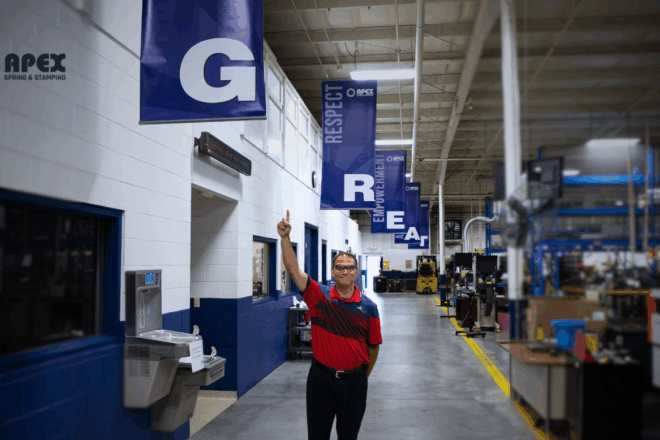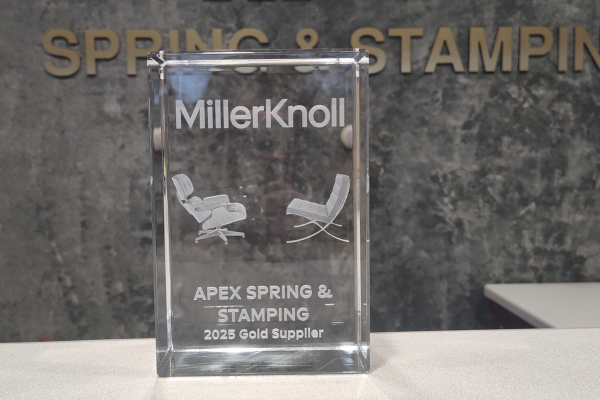Industrial Springs
Since their invention, industrial springs have become paramount in the world of engineering and construction. Not only are they important in providing necessary flexibility, but they are also equally important in ensuring stability in both large and small structures, machines, and equipment. A spring is a mechanical component that is elastic and deflects when under load; it then straightens up when the load is released. Although there are many distinct spring designs, the term is frequently used in daily speech to refer to coil springs. Conventional springs are primarily made of spring steel, while various non-metallic materials, such as the bow, are also springs.
Request A Quote
What is an Industrial Spring?
An industrial spring is another name given to a normal spring that is manufactured from metallic or non-metallic material in order to provide support, flexibility, and mobility to industrial equipment, structures, machines, etc. Different types of industrial springs used in creating products, such as watches, telephones, and other consumer electronics, can be made via fast prototyping technologies like 3D printing and CNC machining.
Some of the most popular products include industrial springs in their design. This means it’s necessary to make informed decisions when selecting an industrial spring. From an engineering or technical point of view, springs are mechanical devices that can store energy when force is applied to them. This energy is then released in the form of restoring force that tries to bring the spring back to its equilibrium position. Industrial springs have a plethora of applications due to their unique characteristics and working mechanisms.
Compression Springs
Compression springs are characterized by their resistance to axial compressive forces. They are one of the most prevalent and effective energy-storage springs. A compression spring compresses, or shortens, in response to applied force, storing energy in the process. This energy is released as the spring tries to stretch back to its original length, “pushing back” against the weight. An example of a compression spring is a wave spring.
Extension Springs
Extension springs and tension springs are two terms for springs that can resist tensile forces or pressures that try to pull them apart. They are initially coiled with tension, and when they are lengthened, they attempt to return to their initial shape, which results in a “pulling” force. These springs can be easily linked to elements that need to be kept together by the force of the spring because they have loops or hooks on the ends.
Torsion Springs
In contrast to axial tension or compression forces, torque-resistant applications require the use of torsion springs. Helically wrapped springs with arms on the ends, known as “torsion springs,” spin around their central axis. The arms are attached to the extraneous parts, which provide pressure on the spring. It’s crucial to remember that a torsion spring must only be loaded in a direction that causes the diameter of the spring to shrink. The torsion springs found in clothespins are a typical example.
Contact Us
Applications of Industrial Springs
Industrial springs, as mentioned earlier, are abundantly utilized in a wide range of industries, whether it is to provide flexibility or to stabilize a structure. Based on their characteristics and properties, here are some of the useful applications of industrial springs:
Automotive Industry
Industrial springs’ cylindrical design provides for uniform tension and frictionless action over the whole spring. Because of this, they are utilized in car suspension systems, automotive valves, gear shifters, and clutches.
Furniture Industry
In the furniture industry, industrial springs are used in abundance because of their elasticity and flexibility. Furniture is designed for human comfort or ergonomics, and industrial springs are employed in the manufacturing process to achieve those objectives. Moreover, industrial springs are even used in leather sofas to provide the required elasticity and stability for the user.
Electric Vehicles
Industrial springs are equally important in the manufacturing process of electric vehicles. They ensure that electric vehicles are stable and streamlined in their operation.
Agricultural Industry
As you might expect, springs that are large, strong, user-friendly, and have a long working life are needed for the kind of machinery utilized in the agriculture sector. Stainless steel springs with two bodies perform admirably in such demanding applications. Tractors, sprayers, plows, and even fertilizer equipment can all use torsion springs.
Medical Industry
Springs of high strength and durability are required for the medical industry. Springs must also be employed for complicated machinery. As a result, torsion springs are made of high-carbon steel. Torsion springs have medical applications such as hospital beds, medical immobilization devices, dental applications, and wheelchair lifts.
Need help determining the right compression spring for your application? Contact us to discuss your needs with one of our experienced team members or call us at 616.453.5463.
Materials Used For The Manufacture Industrial Springs
Apex Springs specializes in the production of compression, extension, and torsion springs, keeping quality standards and reliability their top priorities. The materials utilized by Apex Springs for manufacturing industrial springs include the following:
- Wire forms
- Customized material (e.g., music wire per ASTM A228, precoated material, chrome silicon, stainless steel)
Moreover, Apex Springs also offers top-quality post-processing offerings such as:
- Stress relieving
- Shot peening
- Protective coatings
What Affects the Performance of an Industrial Spring?
The performance of an industrial spring primarily depends on the following factors:
- Design: The design of the spring, or, in other words, the type of the industrial spring, affects its performance level. Some types of springs are specific to certain applications.
- Material: The material of the spring greatly affects an industrial spring’s performance. Fatigue cracks may spread faster and farther with lower-grade material than with higher-quality material. These flaws increase the spring’s wear and tension, hastening its failure.
- Wire Shape/Wire Diameter: The spring rate improves as the wire’s diameter does. The wire becomes stronger and more challenging to deflect as it gets thicker.
- Heat Treatment: This improves the shear strength, toughness, and tensile strength of a spring, resulting in much longer fatigue life. In addition, it improves ductility and impacts the material’s unique features, such as elasticity, hardness, etc.
- Finishing: Industrial springs should go through the process of finishing to protect them from corrosion and abrasion.
Why Partner With Apex Spring and Stamping
As a world leader in the production of high-quality springs, you can be confident in the products, solutions, services, and value we provide to our customers. It is always our goal to meet and exceed the needs of our customers.
Get the conversation started today!
| Contact Us | Request A Quote |




